Comparing the Seagate Ironwolf 510 vs WD Red SN700 SSD – Which Should You Use in Your NAS?
Over the last few years of NAS Drive releases from brands like Synology, QNAP and Asustor, we have seen most Prosumer and SMB releases arriving with support of either M.2 NVMe SSD bays, or PCIe slots that allow you to add this feature in the system’s lifespan. The appeal of SSD cache has grown considerably in recent years, as the demands in speed and responsiveness of the data on NAS drives has grown considerably. Despite the well-established fact that SSDs are faster than Hard drives, there is no ignoring that the available capacity and price point of hard drives makes them ultimately more viable and desirable in a NAS than SSDs. However, SSD Caching serves as a nice middle ground, allowing you to enjoy the bigger and lower cost hard drive RAID storage pools, but also adding two or more individual SSDs to bolster the system in performance. The Seagate Ironwolf 510 and WD Red SN700 are SSD’s that are designed with NAS use in mind and can be used in the process of write caching (where data is written to the faster performing SSD first, then migrated over to the HDDs), read caching (whereby more frequently accessed data is copied over to the SSDs in order to seed up their access by connected clients) or both together. There are numerous other SSD caching methods and protocols, but these are ultimately the most common and today I want to help you decide which NAS SSD you should install in your NAS Drive. There is around an 18-month release date difference between these two SSDs and although both are M.2 NVMe PCIe Gen 3×4 SSDs, there is a large degree of difference in their architecture to take into consideration. So let’s compare the WD Red SN700 and Seagate Ironwolf 510 and see which one deserves your cache.
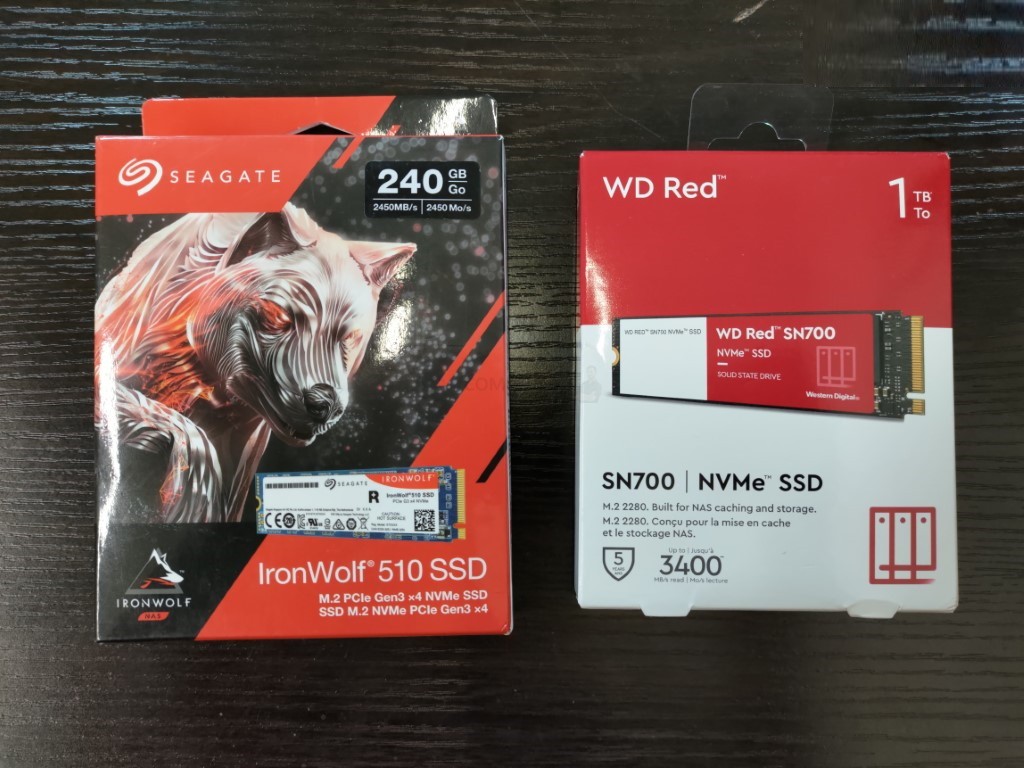
It is worth remembering that the two SSDs in today’s comparison are m.2 NVMe in architecture and although PCIe Gen 4 is compatible with Gen 3 and old, they will not suitable for NAS drives with M.2 SATA connections. We have seen more modern NAS systems released in the last few years abandon m.2 SATA in favour of its PCIe counterpart, but both Seagate and WD both provide SATA alternatives in their Ironwolf and WD Red series. Examples of SATA SSDs for NAS can be found HERE on Amazon.
How do the WD Red SN700 and Seagate Ironwolf 510 SSD Compare on Specs?
Both WD and Seagate are well known for their wide ranges of hard drive and SSD media, as well as both being pioneers of NAS server focused SSDs for caching and flash storage. Although SSDs are all built to a similar ground-level architecture, they will often have their later development shifted in favour of a specific targetted use. This is not a big surprise and much like the cutlery in your kitchen draw, they might be similar but one tool is much better at some tasks than others – ever tried using a spreading butter with a meat-claver? Or stirring tea with a ladle? The WD Red SN700 and Seagate Ironwolf 510 SSD are NAS targetted and although the performance is good, the true stand out factor in this design is the durability of the drive. SSDs for use in NAS systems will in most cases be used for caching and that means a very frequent turnover (i.e. data wrote, updated, deleted, repeat) daily as the demands of client users and devices change. Both of these SSDs arrive with a high level of durability and workload rating, but the Seagate Ironwolf 510 and WD Red SN700 definitely have differing ideas of preliminary architecture and what that price tag is being spent on. Let’s look at the shared base-level SSD architecture of each SSD (available on every capacity):
Below Specifications are taken from official brand sources, data sheets and reputable sources (real-world tests we performed ourselves are a little lower in the article):
| Specifications | Seagate IronWolf 510
Released March 2020
|
WD Red SN700
Released September 2021
|
| Warranty | 5yr + 3yr Rescue | 5yr |
| MTBF/MTTF | 1,800,000 | 1,750,000 |
| PCIe Generation | PCIe Gen 3×4 | PCIe Gen 3×4 |
| NVMe Rev | NVMe 1.3 | NVMe 1.3 |
| NAND | Kioxia BiCS3 64L TLC | Sandisk 96L 3D TLC NAND |
| Controller | PS5012-E12DC | WD NVMe Controller |
As you might know, WD develops practically all of their SSDs ‘in-house’ and feature proprietary NVMe controllers, subsidiary company NAND (in this case Sandisk) and this allows them to be able to control availability and pricing in a way that most other SSD brands cannot. Seagate uses 3rd party controllers and NAND manufacturers for the most part in their ranges, but are still generally quite top tier providers. The release time difference between the Seagate Ironwolf 510 and WD Red SN700 makes an impressive difference here in terms of the hardware on offer on either SSD, with the more recently released WD Red SN700 having notably superior connectivity, NAND quality and overall performance. The older Seagate Ironwolf 510 SSD features 3years of forensic level data recovery services though (which caching NAS users might want to have in the event of ‘trapped data’ during write caching operations and a critical system failure/power-cut) which is very unique to the brand. However, overall the WD Red SN700 has the superior architecture here. Below is how the building blocks of the WD Red SN700 and Seagate Ironwolf 510 result in throughput, IOPS and Durability at each capacity tier (based on officially provided figures):
| 240/250GB | Seagate IronWolf 510
Released March 2020
ZP240NM30011 – $69 |
WD Red SN700
Released September 2021
WDS250G1R0C – $55 |
| Sequential Read (Max, MB/s), 128 KB | 2,450MB | 3,100MB |
| Sequential Write (Max, MB/s), 128 KB | 290MB | 1,600MB |
| Random Read (Max, IOPS), 4 KB QD32 | 100,000 | 220,000 |
| Random Write (Max, IOPS), 4 KB QD32 | 12,000 | 180,000 |
| Total Terabytes Written (TBW) | 435TB | 500TB |
| DWPD | 0.9-1.0 DWPD | 1.0DWPD |
| 480/500GB | ZP480NM30011 – $119 | WDS500G1R0C – $79.99 |
| Sequential Read (Max, MB/s), 128 KB | 2,650MB | 3,430MB |
| Sequential Write (Max, MB/s), 128 KB | 600MB | 2,600MB |
| Random Read (Max, IOPS), 4 KB QD32 | 193,000 | 420,000 |
| Random Write (Max, IOPS), 4 KB QD32 | 20,000 | 380,000 |
| Total Terabytes Written (TBW) | 875TB | 1000TB |
| DWPD | 0.9-1.0 DWPD | 1.0DWPD |
| 960/1000GB | ZP960NM30011 – $209 | WDS100G1R0C – $152.99 |
| Sequential Read (Max, MB/s), 128 KB | 3,150MB | 3,430MB |
| Sequential Write (Max, MB/s), 128 KB | 1,000MB | 3,000MB |
| Random Read (Max, IOPS), 4 KB QD32 | 345,000 | 515,000 |
| Random Write (Max, IOPS), 4 KB QD32 | 28,000 | 560,000 |
| Total Terabytes Written (TBW) | 1,750TB | 2000TB |
| DWPD | 0.9-1.0 DWPD | 1.0DWPD |
| 1920/2000GB | ZP1920NM30011 – $409 | WDS200G1R0C – $289.99 |
| Sequential Read (Max, MB/s), 128 KB | 3,150MB | 3,430MB |
| Sequential Write (Max, MB/s), 128 KB | 850MB | 2,900MB |
| Random Read (Max, IOPS), 4 KB QD32 | 270,000 | 480,000 |
| Random Write (Max, IOPS), 4 KB QD32 | 25,000 | 540,000 |
| Total Terabytes Written (TBW) | 3,500TB | 2500TB |
| DWPD | 0.9-1.0 DWPD | 0.7DWPD |
| 1920/2000GB | N/A | WDS400G1R0C – $649.99 |
| Sequential Read (Max, MB/s), 128 KB | N/A | 3,430MB |
| Sequential Write (Max, MB/s), 128 KB | N/A | 3,100MB |
| Random Read (Max, IOPS), 4 KB QD32 | N/A | 550,000 |
| Random Write (Max, IOPS), 4 KB QD32 | N/A | 520,000 |
| Total Terabytes Written (TBW) | N/A | 5100TB |
| DWPD | N/A | 0.7DWPD |
Overall, it should come as no surprise that the WD Red SN700 SSD is the notable leader here in practically all official benchmarks over the slightly older Seagate Ironwolf 510 SSD, thanks to that improved architecture. Most notably in write performance and IOPS in general, it had a clear lead even in the lowest available capacities. Of course, these are officially provided performance figures and represent maximums based on the highest available hardware at the time of release. Let’s take a look at how these two SSDs compare in our own tests.
How Did the Seagate Ironwolf 510 and WD Red SN700 SSD Compare in OUR Tests?
Moving away from the official performance stats provided by WD and Seagate, I wanted to see how the Seagate Ironwolf 510 and WD Red SN700 compared in my own tests. Testing of these two SSDs will be broken down into 3 main parts, a CrystalDisk Benchmark test, Atto Disk Benchmark Test and an AJA media test. In each test, the SSD was in the 2nd storage slot (i.e not the OS drive). Each test was conducted three times and the system was left for 1 minute between tests to allow the SSD time to stabilize. The specifications of the test machine are:
Test Machine:
- Windows 10 Pro Desktop System
- Intel i5 11400 Rocket Lake – 6-Core 2.6/4.4Ghz
- 16GB DDR4 2666MHz Memory
- Intel B560M mATX Motherboard
- OS Storage, Seagate Firecuda 120 SSD
- Test SSD connected to Secondary PCIe Gen 4×4 M.2 Slot
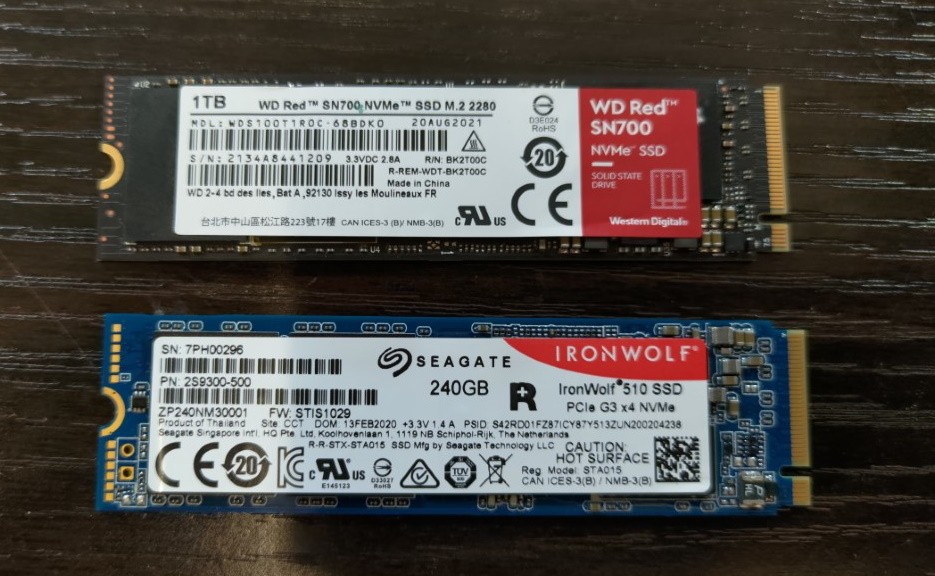
CrystalDisk 1GB Test File – Read, Write, 70/30% Mixed and IOPS Performance
CrystalDisk is still highly regarded as one of the most reliable tools for measuring storage media performance. Though it does create somewhat high-end results that may not be truly indicative of your own real-world setup, it can be used to display maximum potential throughput and IOPs at each tier. The first test for the Seagate Ionwolf 510 and WD Red SN700 was on a 1GB test file:
| WD Red SN700 SSD
|
Seagate Ironwolf 510 SSD
|
Overall Winner: The WD Red SN700 SSD
CrystalDisk 4GB Test File – Read, Write, 70/30% Mixed and IOPS Performance
The next test was to perform the same parameters in CrystalDisk on the WD Red SN700 and Seagate Ironwolf 510, but this time with a 4GB test file (larger files may result in higher sequential performance, but lower comparative IOPS):
| WD Red SN700 SSD
|
Seagate Ironwolf 510 SSD
|
Overall Winner: The WD Red SN700 SSD
ATTO DiskBenchmark 256MB Test File – Read, Write
Switching things up, I then moved testing the Seagate Ironwolf 510 and WD Red SN700 SSD over to ATTO disk benchmark. A far more detailed tool that spreads performance testing over different file and block sizes. I started with the smallest ‘full range’ test file of 256MB (as smaller would reduce the range of block sizes). Here is how each SSD compared:
| WD Red SN700 SSD
|
Seagate Ironwolf 510 SSD
|
Overall Winner: The WD Red SN700 SSD
ATTO DiskBenchmark 4GB Test File – Read, Write
Sticking with ATTO DiskBenchmark, I then moved the testing of the WD Red SN700 and Seagate Ironwolf 510 onto a x16 bigger test file of 4GB. This would certainly shift where the peaks in performance would sit and hopefully produce a clearer disparity between these two SSDs:
| WD Red SN700 SSD
|
Seagate Ironwolf 510 SSD
|
Overall Winner: The WD Red SN700 SSD
AJA 1080i Media Test 1GB Test File – Read, Write
I then switched to AJA, a popular media testing tool for video formats. Most SSDs will suffer over-saturated Memory/DRAM/SDRAM as sustained large file tests go on. The 1GB file test of AJA on the WD Red SN700 and Seagate Ironwolf 510 is still a small enough value not to be a problem though and we chiefly focused on the disk playback/reads graph to see how they compared in peak performance and also throughout the transfer:
| WD Red SN700 SSD
|
| Seagate Ironwolf 510 SSD
|
Overall Winner: The WD Red SN700 SSD
AJA 1080i Media Test 16GB Test File – Read, Write
Then we used a much, MUCH heavier test in AJA of 16GB on the Seagate Ironwolf 510 and WD Red SN700 SSD. Unsurprisingly this can often overflow the SSD cache/memory on board and result in a dip in performance as the SSD bottlenecks internally. So, when conducting this test, we are looking at peak performance AND how long the SSD maintained that performance before a potential dip. Here is how these two SSD compared:
| WD Red SN700 SSD
|
| Seagate Ironwolf 510 SSD
|
Overall Winner: The WD Red SN700 SSD
WD Red SN700 vs Seagate Ironwolf 510 SSD – The Results
It will come as little surprise that in the case of comparing the WD Red SN700 and Seagate Ironwolf 510, the more recently released and more modern architecture WD SSD was the victor in the majority of tests (both official 1st party and my own). Although it has taken WD almost a year and a half to release a competitor NAS NVMe SSD to Seagate’s entry, it is unquestionable the better performing drive as it takes advantage of numerous newer innovations in SSD architecture that have been developed and released in that time. The Durability across the entire range of the Ironwolf 510 series and three years of inclusive forensic level data recovery do make the Seagate Ironwolf an attractive choice in 2021, but in NAS use, general use and performance overall, the WD Red SN700 wins the day.
| The WD Red SN700 NVMe SSD Wins on:
|
The Seagate Ironwolf 510 NVMe SSD Wins on:
|
📧 SUBSCRIBE TO OUR NEWSLETTER 🔔
🔒 Join Inner Circle
Get an alert every time something gets added to this specific article!
This description contains links to Amazon. These links will take you to some of the products mentioned in today's content. As an Amazon Associate, I earn from qualifying purchases. Visit the NASCompares Deal Finder to find the best place to buy this device in your region, based on Service, Support and Reputation - Just Search for your NAS Drive in the Box Below
Need Advice on Data Storage from an Expert?
Finally, for free advice about your setup, just leave a message in the comments below here at NASCompares.com and we will get back to you. Need Help?
Where possible (and where appropriate) please provide as much information about your requirements, as then I can arrange the best answer and solution to your needs. Do not worry about your e-mail address being required, it will NOT be used in a mailing list and will NOT be used in any way other than to respond to your enquiry.
Need Help?
Where possible (and where appropriate) please provide as much information about your requirements, as then I can arrange the best answer and solution to your needs. Do not worry about your e-mail address being required, it will NOT be used in a mailing list and will NOT be used in any way other than to respond to your enquiry.

|
 |
#RunWithIronWolf and #WDRedNAS . This unit was supplied by @seagate and @WesternDigitalCorporation .The review provided was free of bias and my own independent opinions
Beelink ME Pro NAS Revealed
Best SOLID STORAGE NAS of 2025
Should You Worry About the NanoKVM Hidden Microphone?
Best Cheap NAS of 2025
Minisforum MS-02 Ultra - WHO IS THIS FOR??? (The First 48HRs)
Why People Use TrueNAS, UnRAID and Proxmox to Turnkey NAS (Synology, QNAP, etc)
Access content via Patreon or KO-FI





Discover more from NAS Compares
Subscribe to get the latest posts sent to your email.


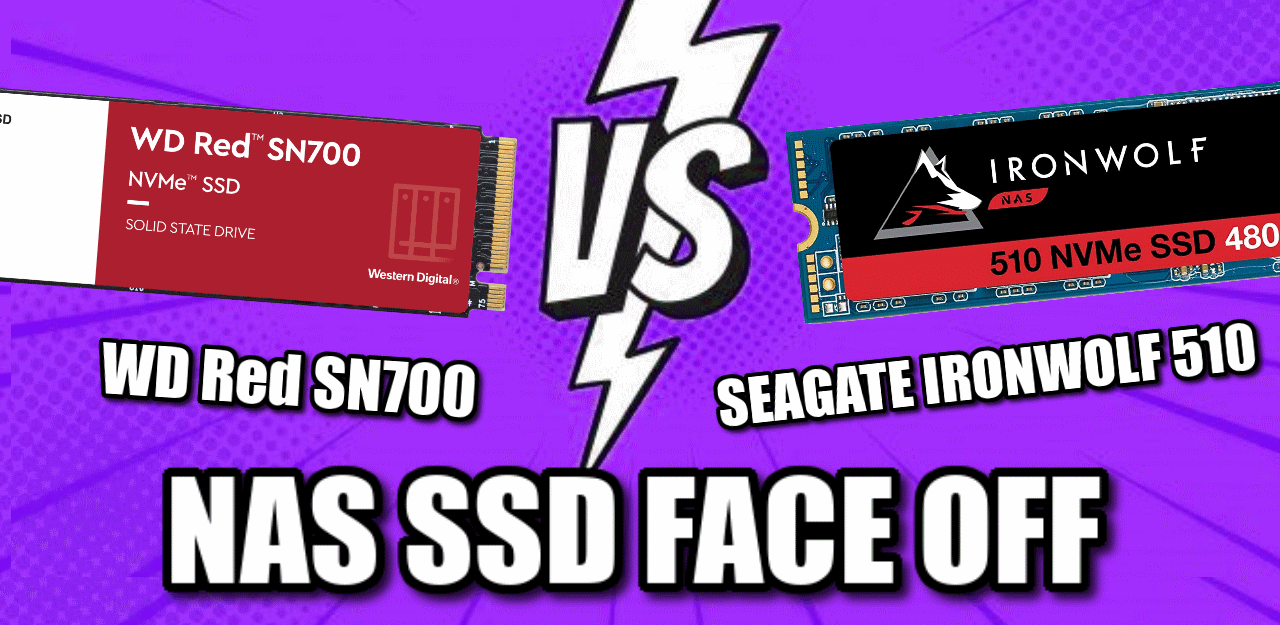


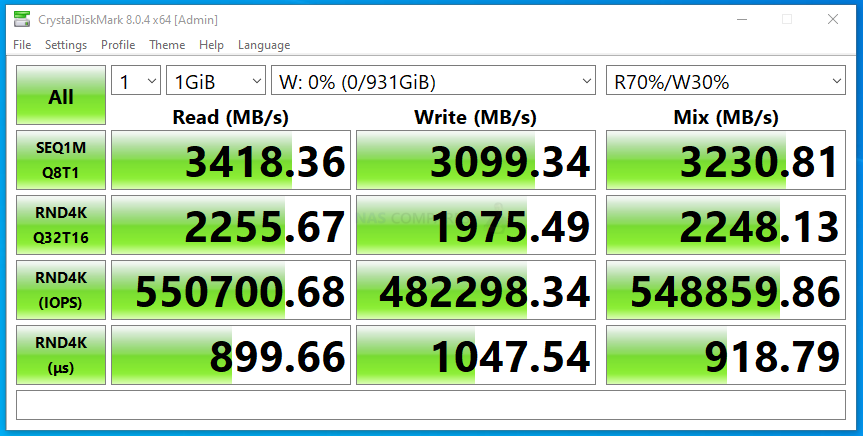
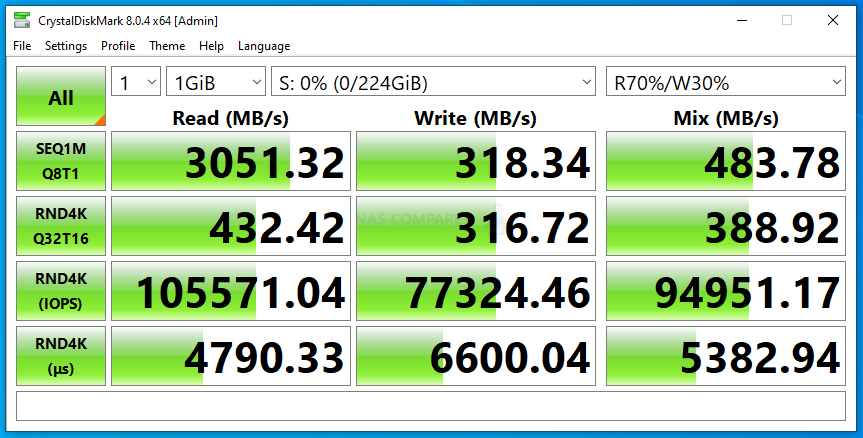
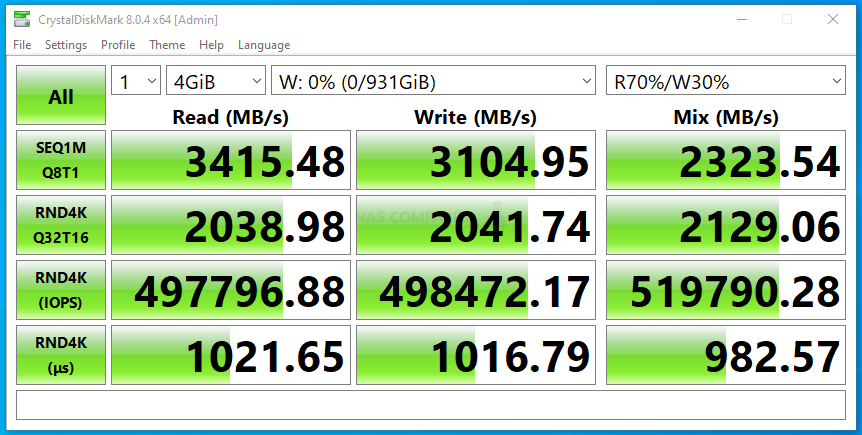
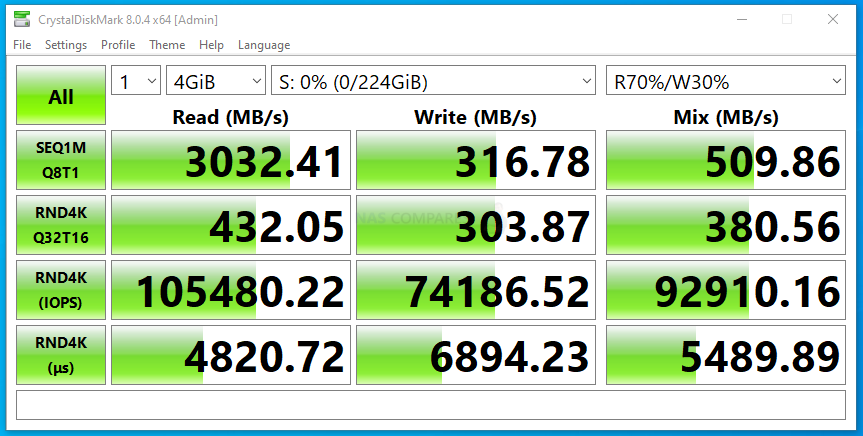
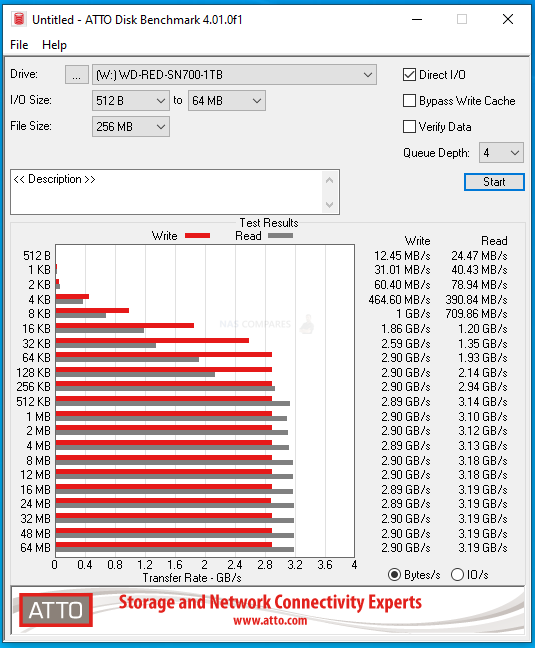
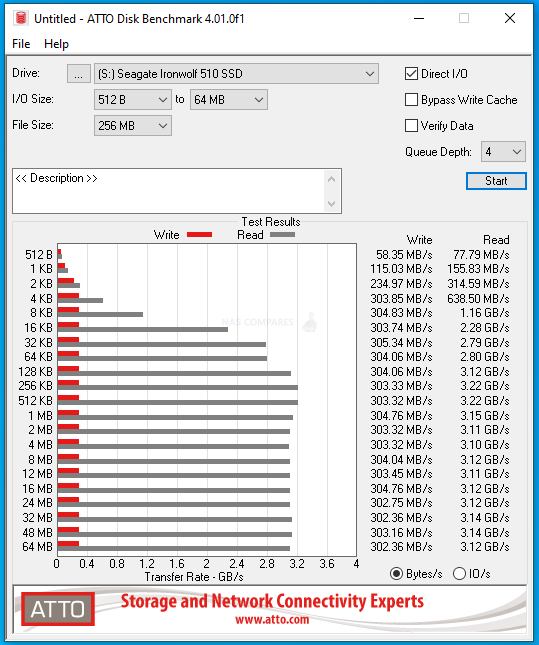
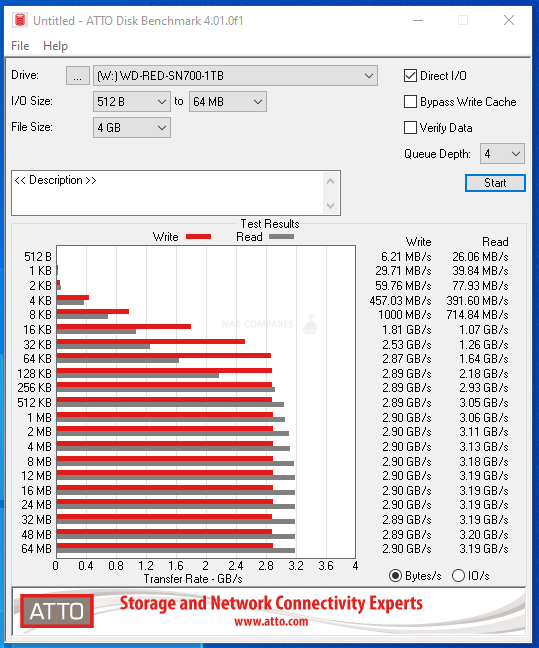
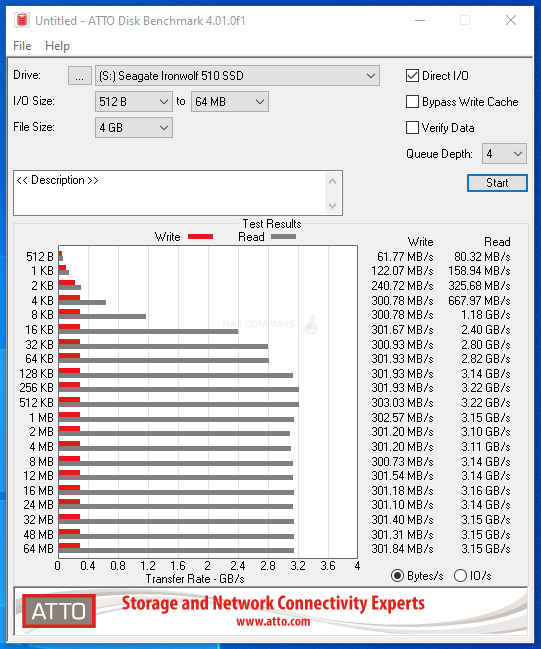








What are the pros & cons of not mirroring the nvme cache?
Thinking of using 18 tb hdd to building a 8-disks nas with 2 as parity for media server.
With the eventual usable capacity of 108TB, what would be the recommended size of nvme cache? And should it be set to Read only or read/write?
REPLY ON YOUTUBE
Thanks, great as always!
REPLY ON YOUTUBE
I use a SN700 with overprovisioning for my Linux desktop boot drive…been working great!
REPLY ON YOUTUBE
Is it worth doing Raid 1 on a nvme ssd?
I think doing Raid 0 would be better since due to ssd’s design (if one ssd fails the other will fail too.).
REPLY ON YOUTUBE
SN700 isn’t compatible for the synology ds1019+. Installed it anyway.
REPLY ON YOUTUBE
is there any ssd which can b used in cctv surveillance dvr instead of wd purple HDD drives
REPLY ON YOUTUBE
Why compare the outdated IronWolf “510” when the IronWolf “525” is available for almost the same money. PCI Gen 4. Much Faster.
REPLY ON YOUTUBE
Are these NVMe SSDs whitelisted on Synology *Compatibility List?*
REPLY ON YOUTUBE
In you opinion how do the Sabrent rocket SSD’s compare to the WD red? Faster perhaps?
REPLY ON YOUTUBE
Based on your recommendation I bought two 500gb WD red SN700’s units for read write cache, RAID1.
I ordered them a while ago, I just received them. They make a big difference to my Synology 1821+,.
Because I am using these WD units as R/W cache the NAS is on a UPS.
The biggest issue in Canada was availability, I ended up ordering from WD in the USA.
REPLY ON YOUTUBE
Is that a gold calculator watch?
REPLY ON YOUTUBE
I plan on upgrading my trusty QNAP TS-328 to the TS-364 later this year. I wasn’t sure what SSD would be better for this build, but now I think I’ll go for the WD drives over the Seagate. Thanks.
REPLY ON YOUTUBE